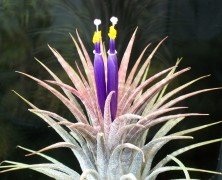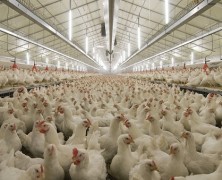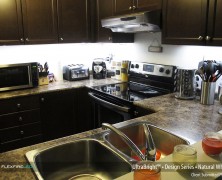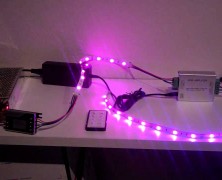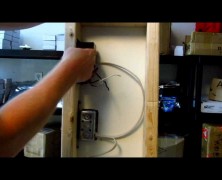“There’s nothing quite like the pleasure you get from plants and flowers,” he said to himself. “They certainly do cheer you up.” ― Charmian Hussey, The Valley of Secrets Over the years we’ve had many customers come to us with questions about DIY LED grow lighting. Taking care of plants is a pleasurable activity that can provide food for a family or offer a portal to nature within the home. Not only that, but being around plants actually increases memory retention and emotional stability. LED lights provide a rich, full spectrum light, are extremely energy efficient, provide even, directional light distribution and emit very little heat — leading to a less expensive garden with richer results. Those interested in indoor gardening should follow these steps to build a DIY LED grow light guide using Flexfire LEDs strip lights. DIY LED Grow Light Parts: UltraBright™ 24v Architectural Series LED strip lights* Aluminum bars for heat dissipation Adhesive pads Silicone RTV silicone Nylon ties Solderless LED strip connectors (strip-to-strip and strip-to-power) Female coaxial connector with screw terminals for wiring 24v LED strip light power supply * Even when working in an indoor environment, consider Outdoor 24v Architectural LED strip lights to protect against humidity and also allow for easier cleaning DIY LED Grow Light Directions: Start by cutting the strip lights to match the width dimensions of your project. Check for markings after every third chip to locate the appropriate place to make your cut. After that, peel off the paper over the adhesive backing and attach the strips along the aluminum bar mounting. The aluminum will act as a heat sink, protecting your plants from excess heat and extending the lifespan of the LED chips. From here, attach solderless connectors to the strip lights. For added stability, tie down...
The Benefits Of Poultry LED Lighting...
posted by Flexfire LEDs
Chickens raised using an intelligent poultry LED lighting system have been found to produce higher quantity and quality of eggs, develop into maturity at a faster rate and enjoy an improved standard of health as compared to chickens raised under traditional light sources. Using LED-based technology chicken farmers can: Lower lighting costs Increase musculoskeletal development and weight gain Induce earlier maturity for hens destined to lay eggs Increase egg output and quality Regulate reproduction cycles Increase length of reproductive life Furthermore, farmers can adjust the color of the LED lights to promote certain outcomes. For example, using red light, farmers were able to stimulate sexual activity and reduce the amount of feed necessary to produce each egg — even though there was no difference in the size, or quality of the egg. The red LED lights were able to increase egg production by up to 38 per hen while decreasing food consumption by 20 percent. Green lights promotes chicken growth at early stages of development, while blue light promotes growth later along the life cycle of the chicken. Blue and green light improved feed conversion (the efficiency at which an animal converts animal feed into desired output such as eggs or meat) by up to 4%, and therefore reduced cost per pound of the chicken by up to 3%. Why is Poultry LED Lighting Superior to Traditional Poultry Lighting? Visible “white” light is actually composed of a range of colors, which can be viewed by refracting light through a dispersive prism. Incandescents, the most common form of poultry barn lighting, are missing many critical portions of the full spectrum found in sunlight. For instance, an incandescent bulb produces a highly diminished amount of both greens and blues. CFLs produce only narrow bands of color in...
How To Install Under Cabinet LED Strip Lighting...
posted by Flexfire LEDs
Under cabinet lighting is one of the most common applications of LED strip lights. This relatively easy installation is a fantastic addition to any kitchen, office, or work bench area that would benefit from high quality direct task lighting. To illustrate this installation, we’ve put together this step-by-step tutorial on how to install under cabinet LED strip lighting. For this tutorial, we reached out to a customer named Owen in Toronto, Canada. Owen was seeking bright, usable light in his kitchen that could be hard-wired to a standard wall dimmer, and told us he had been, “scouring the web off and on for three years” in search of the perfect solution. In the end, he chose Flexfire LEDs UltraBright LED strip lights in natural white after viewing some of our online installation videos and feeling comfortable with our product quality. It’s important to note that for this installation, Owen enlisted the help of a licensed professional electrician. This is something we recommend for all installations, as it ensures code compliance and avoids potential injuries due to improper handling. Here is a “before” photo of his kitchen, using only the existing overhead lighting. And now, onto the installation! In order to achieve proper brightness and even light distribution, he used our solderless connectors to run two parallel sections of LED strip lights under each of three cabinet sections. In the end, he felt that one single strip would have been more than enough, and this parallel run wasn’t actually necessary. Also, note that the strip lights are very thin and low profile – the strips themselves are only actually visible when viewed from below as photographed here. As Owen says, “The low profile design means I don’t even have to rush to add a valence.”...
Video: LED Amplifier Installation...
posted by Flexfire LEDs
If you want to run LED strip lights in a long, continuous section, you will need to use amplifiers. Fortunately, LED amplifier installation is a simple, do-it-yourself installation that is explained in the video...
Attach A Dimmer To Your LED Strip Lights...
posted by Flexfire LEDs
“Can I control LED strip lights with a dimmer?” This is one of our most frequently asked questions, and the answer is absolutely yes! We’ve put together an instructional video that walks you through how to attach a dimmer to your LED strip...






